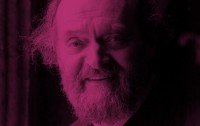Es sang vor langen Jahren. Motette für de la Motte (1984) for alto (or countertenor), violin and viola
The small chamber music composition Es sang vor langen Jahren was completed in 1984, when Diether de la Motte, a German musicologist and radio producer had asked ten composers to set the poem Der Spinnerin Nachtlied by Clemens Brentano to music. Hence the dedication in the subtitle: Motette für de la Motte.
This is one of the few of Pärt’s tintinnabuli works that are not based on liturgical texts, but on a poem, more precisely, a love poem. The verses by Clemens Brentano (1778–1842), a major figure of German Romanticism, are centred around painful longing for his lost Loved One; the borders between earthly and divine love, as well as those between the present moment and memories are blurred as in a dream. This mystical nightsong (Nachtlied) has inspired the choice of the tender-sounding chamber setting, the musical nature of the entire composition as well as a more liberal use of the tintinnabuli technique than before.
The Austrian musicologist and one of the most important researchers of Pärt, Leopold Brauneiss, has indicated Pärt’s unconventional approach to story-telling in music: a single A minor triad is heard at the beginning and at the end of the work, separated from the rest of the music by a pause – a silence – which altogether sounds like the traditional beginning of a fairytale: “Once upon a time...”
The last verse of the poem, Ich sing und möchte weinen (I sing, and would weep), is almost “translated” into music with the composer’s remark “weinen!” (“weep!”) in the score for the delicate coda in piano pianissimo. However, in the music of the coda we do not find a direct “sound painting” or a lamento figure known from Renaissance or Baroque music. According to Arvo Pärt, it is rather meant as an inspiration or a small suggestion to the musicians in finding the right tone and feel on their instrument.
The composition was premiered in November 1984 at the Hanover University of Music and Drama (Hochschule für Musik und Theater Hannover) and was performed by the students Andrea Gropp (alto), Markus Honegger (violin) and Burghard Teichert (viola).



